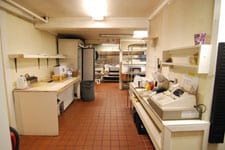Post written by: Kim Cedarstrom commercial/ residential Realtor© [email protected]

Ok, so what are you buying or selling in a business? Inventory? Furniture and fixtures? Receivables? Customer lists? 
There are four ways businesses are valued when sold, and that value decreases with every step down. The four ways are:
1. Sold as a going concern. The “business” is a whole and a functioning unit. Almost always, these are profitable entities and ownership change is smooth or even transparent.
2. Sold as a collection of Assets. Here there is no value given to the “business” and the assets are sold as a unit to one customer. Few of these “businesses” are even marginally profitable and are more likely to be distressed. An example would be selling to a competitor who could make use of the assets in their endeavor.
3. In an orderly disposition. Here a “going out of business sale” disposes of inventory, furniture and fixtures, and anything of value. This approach assumes the owner has equity in the assets and time to dispose of them.
4. In a forced sale/liquidation. This is usually a foreclosure or sale for creditors, often done in an auction. Quick and dirty.

The value drops in example two – “Sold as a Collection of Assets”. Here’s where one of the biggest problems comes in when selling a business. When it’s time to sell, your business doesn’t show a profit; but you maintain there is some other value there and feel there is worth. Look, if you can’t prove profit with tax returns, you can’t show return for someone’s investment and you have dropped down to this category. When the “business” shows no provable return, it has no value. You are now down to the value of the unencumbered assets. If you are in this situation, call me and I can give you a strategy to remedy this. It will take time, but you will stand a better chance of selling as a “business” and realizing a profit. Most sales that I have been around in this category realize anywhere from 40 to 80% of the wholesale “book” value of the assets, the lower value being much more the rule.
If you have hit the third category – “an orderly disposition”, you’ve been through trying steps one and two. This is not an ideal situation, but some value can be extracted here. There are companies that run these sales for you. They tend to take a lot, if not most, of the money out of the process and often require you to do most of the work of running the “sale”. Here you can hope to realize 20 to 50 % of the wholesale value of those assets sold.
Category number four -“a forced sale” is usually the result of a foreclosure or an impending one. This basically a “fire sale/auction” and you are at the mercy of the close out gods. You are lucky to get 20% of wholesale and much more likely to get 10% when all is said and done.
So, if you are selling your business, you want to be in the first category and work your way down only as you need to.
Now, you are ready to buy or sell your business. It’s a going concern and makes money. How much do you pay/ask? I’ll cover that in the next edition. “Pricing your Business to Sell”. See you then.
Kim Cedarstrom is a licensed residential/commercial Realtor© and consultant. After having spent a lifetime founding, operating, and selling businesses in the Lakes Region of New Hampshire, he now offers a lakefront/residential real estate practice as well as commercial property and business sales services. Kim can be reached at [email protected] or directly at 603-520-6609. Initial client conferences are always free of charge.






